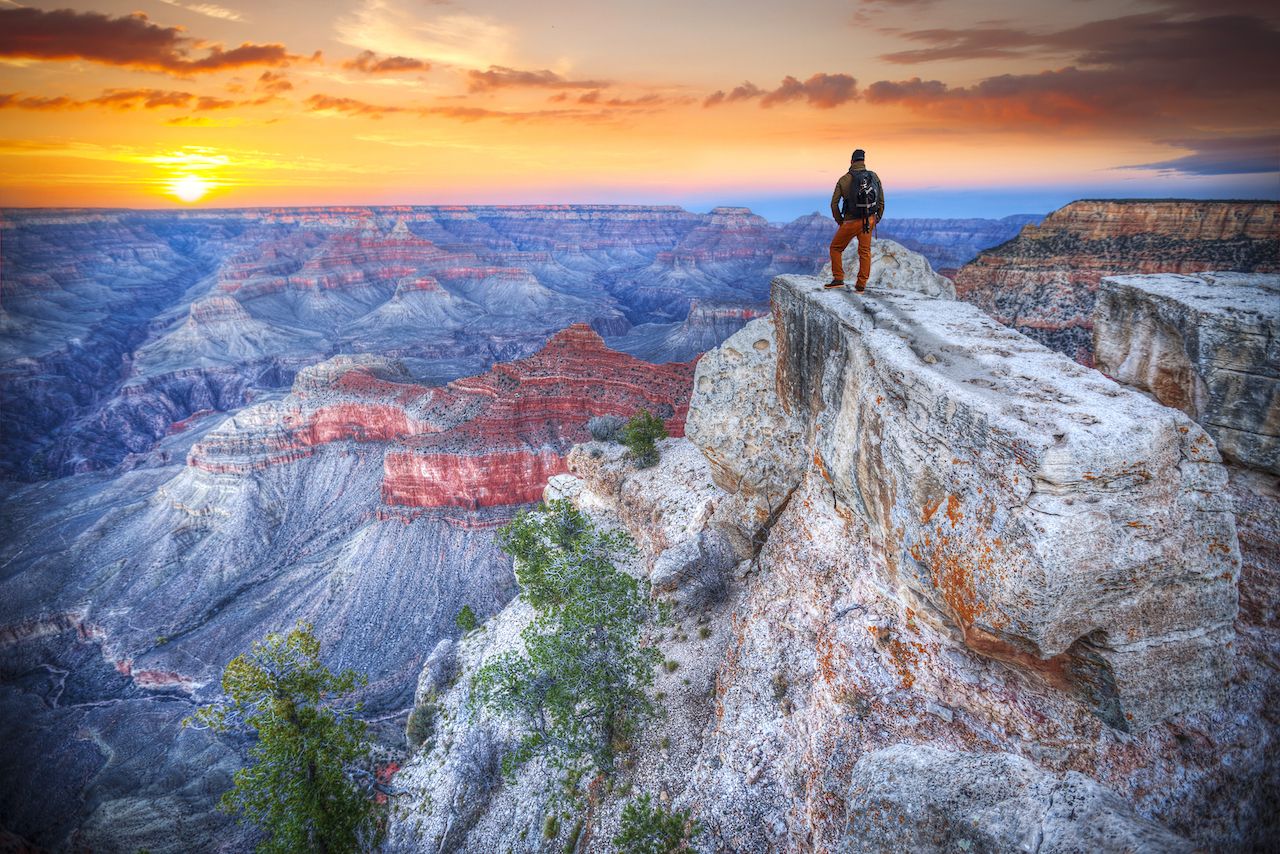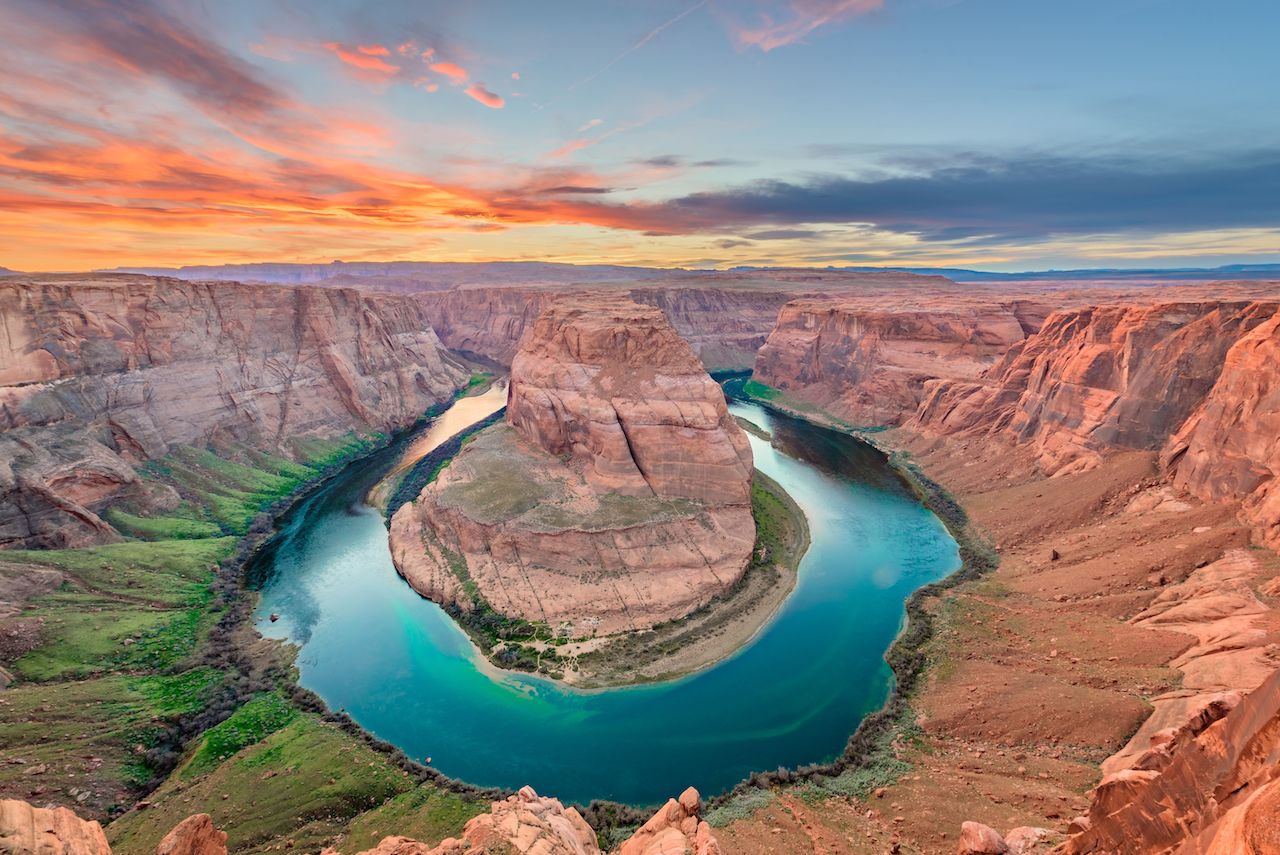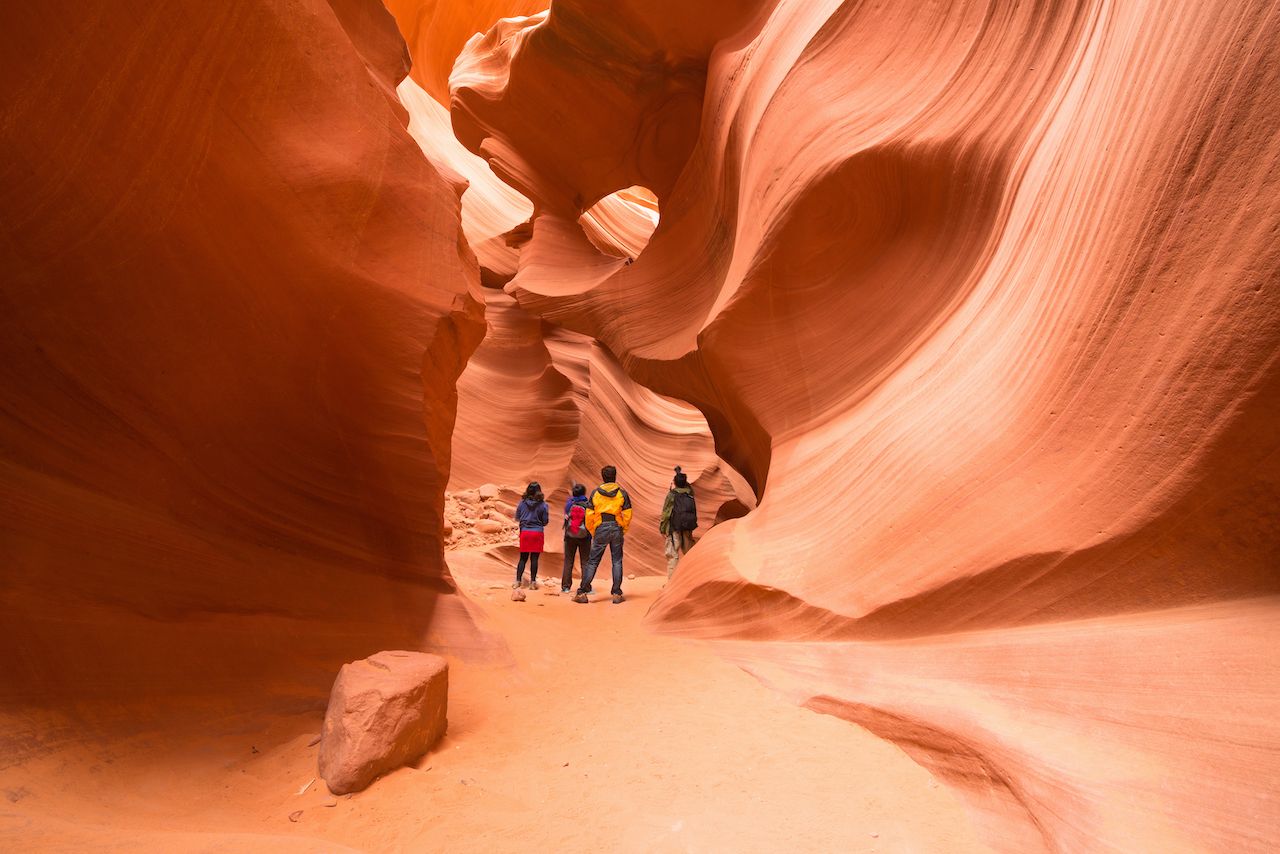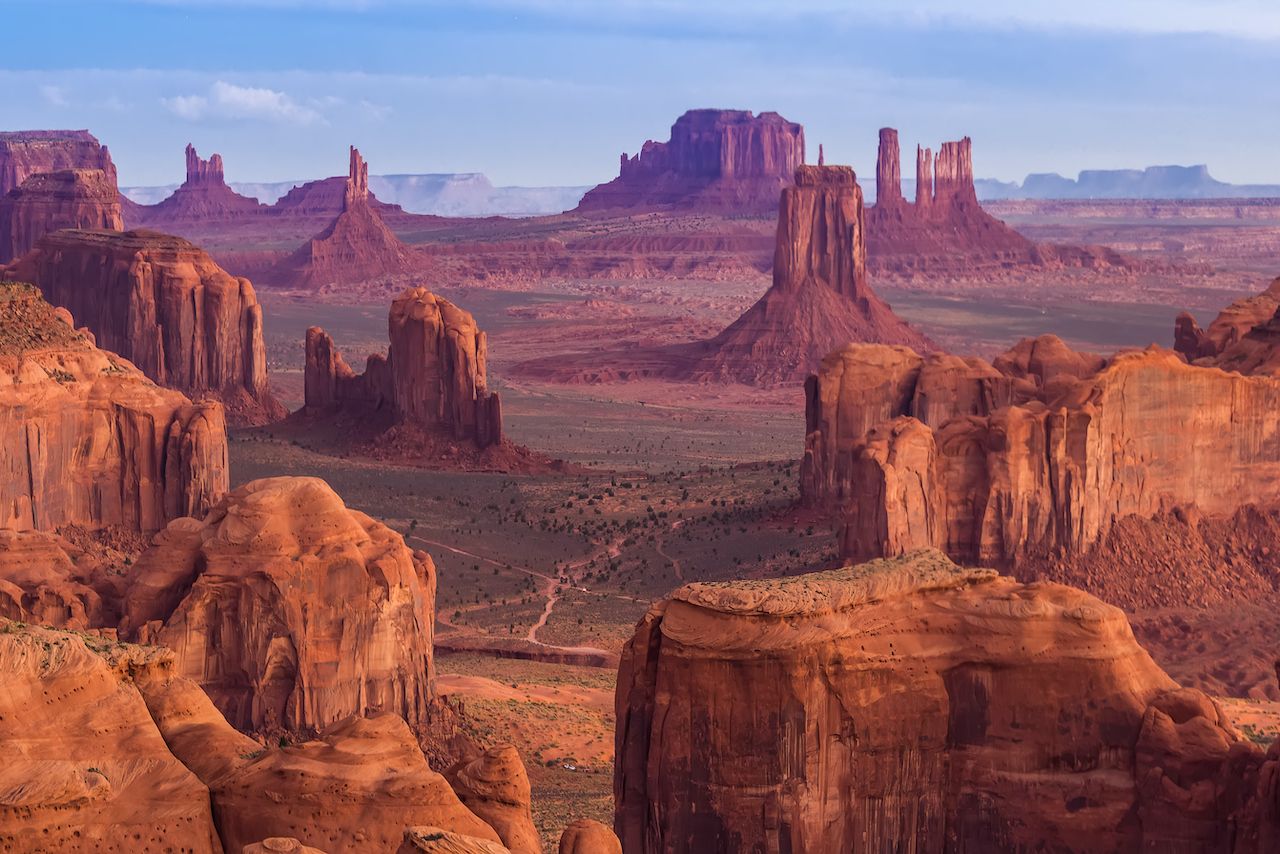1. The Grand Canyon

Photo: Skreidzeleu/Shutterstock
It’s hard to imagine a trip to Arizona that doesn’t involve at least a peek at the Grand Canyon. This massive gorge isn’t just a geological marvel, it’s a symbol of Western adventure and American spirit. Visible from space, the canyon is close to 300 miles long and at points over a mile deep. One look over the edge and it’s easy to see why it’s considered one of the Seven Wonders of the Natural World.
2. The Colorado River

Photo: LucasHeplerPhotography/Shutterstock
The Colorado River is the lifeblood of Arizona, providing about a quarter of the state’s water. It’s also responsible for creating the spectacular images of the Grand Canyon in #1 above, in addition to countless other features along its lengthy course through Arizona — both natural and manmade — a course which it has followed for millions of years.
3. Waterfalls of the Havasupai Reservation
Every year, thousands of tourists make the 11-mile hike to see the waterfalls of Havasu Canyon and the Havasupai Reservation. The blue-green water gets its color from limestone deposits known as travertine, and the falls make up a world-renowned site that, when first glanced, defy logic. Water in the desert is hard enough to grasp, but it’s the brilliant azure of the falls here that’s really surprising.
4. Clear night skies
Arizona averages less than eight inches of rainfall a year. That’s bad news if you want to go splash in puddles, but if you’re into checking out the stars this state can’t be beat. For a great show, time a trip with the annual Orionid meteor shower in October.
5. Slot canyons

Photo: Shutterstock/Yongyut Kumsri
Walking through one of Arizona’s slot canyons is the closest thing a tourist can get to visiting another planet. The deep narrow trenches are formed by water that, over millennia, cuts through soft rock formations, usually sandstone or limestone. Because the paths are so narrow, they often channel narrow beams of ethereal light. While many of the canyons hide just off northern Arizona highways, some are on the Navajo Reservation and are inaccessible to the general public. Antelope Canyon, pictured above, is the state’s most popular. Schedule a tour to visit the canyon.
6. Monument Valley

Photo: Zhukova Valentyna/Shutterstock
The red buttes protruding from the painted sand of Monument Valley look like memorials sculpted by a mythical goddess. The view of the three most iconic rock formations, seen above, is for many the visual definition of the American West. Monument Valley is part of the Four Corners region, where Arizona, Utah, Colorado, and New Mexico meet — a semi-autonomous region of the Navajo, Hopi, Ute, and Zuni reservations.
7. The Sonoran Desert
When you think of desert heat, cacti, and cowboys, you’re thinking of the Sonoran Desert. Stretching from California and dipping into Mexico, the Sonora is the hottest desert in North America. The harsh weather often pushes the mercury past 100 degrees…and leaves many with the incorrect impression that not much can survive here.
8. Desert wildlife
In fact, the Sonoran Desert is teeming with wildlife. From bobcats and coyotes, to a dozen different endemic bird species, and even amphibians and fish, the desert is an amazingly diverse ecological system that speaks to Mother Nature’s ability to adapt.
9. Saguaro cactus
The saguaro cactus is practically synonymous with Arizona deserts (in my opinion, their lack of representation on the state flag is a mystery). Large and slow growing, saguaros can reach up to 70 feet tall and may not sprout an arm until they’re a 100 years old. Many birds make their nests inside their tree-like trunks, and their fruits have been prized over the centuries by indigenous peoples.
10. The monsoon
Deserts and massive rainstorms don’t tend to go hand in hand. However, Arizona has an annual monsoon season that runs from mid-June to September, when the state gets about half of its annual rainfall. The weather event is created by changing wind patterns that bring in moisture from the Pacific. The result is rain and lightning storms that are among the best nature shows on Earth.
11. Haboobs
Calling a haboob a sandstorm is like telling a small child there’s no such thing as Santa Claus. Yeah, we all know that, but you don’t have to kill the magic. A haboob is a large sandstorm created by atmospheric gravity. It simply swallows a city and leaves. Seeing one in person is epic.
12. Post-monsoon wildflowers
Blink and you might miss it. Arizona has one of the country’s most beautiful but also short-lived wildflower seasons. Beyond the explosion of color that takes over the desert for a few weeks, part of the allure of wildflower season is how little we know about it. It’s impossible to predict when it’ll come, and it requires a “triggering rainstorm” months in advance.
13. Sedona’s vortexes

Photo: LeStudio/Shutterstock
Its red-rock mountains and cold creeks alone make Sedona a special place, but there’s something else at work… Sewn into the fabric of the town is the unmissable New Age vibe that brings the health-food-eating, yoga-practicing aficionados in droves. But where does that vibe come from? It’s the vortexes, duh.
Nailing down exactly what a vortex is in this context can be pretty difficult. It’s an abstract concept you might tell yourself you ‘get’ before you do, much in the same way you might tell yourself you ‘feel’ it before you do. A vortex is simply a place where natural Earth energies are strong. Many believe Sedona’s vortexes have healing or spiritually activating powers that help with everything from health to general problem-solving abilities and clear-mindedness. Even if you find this idea a little too hippy-dippy, think of Sedona as a place so inspirationally beautiful you can’t help but contemplate the scientific fact that your body is made of the exact same atoms as the dirt and mountains around you.
14. The Arizona Strip / Vermillion Cliffs
Sandwiched between Utah and the Grand Canyon, the Arizona Strip is one of the state’s most remote regions. It’s hard to get to, but its natural wonders are well worth the trip. Home to a small population of California condors, the Arizona Strip is also famous for the Vermillion Cliffs, which appear like giant stairs leading up the Colorado Plateau.
15. Epic sunsets

Photo: Shutterstock/John D. Sirlin
Take one look at the purples and oranges of an Arizona sunset, and little else can compare.

